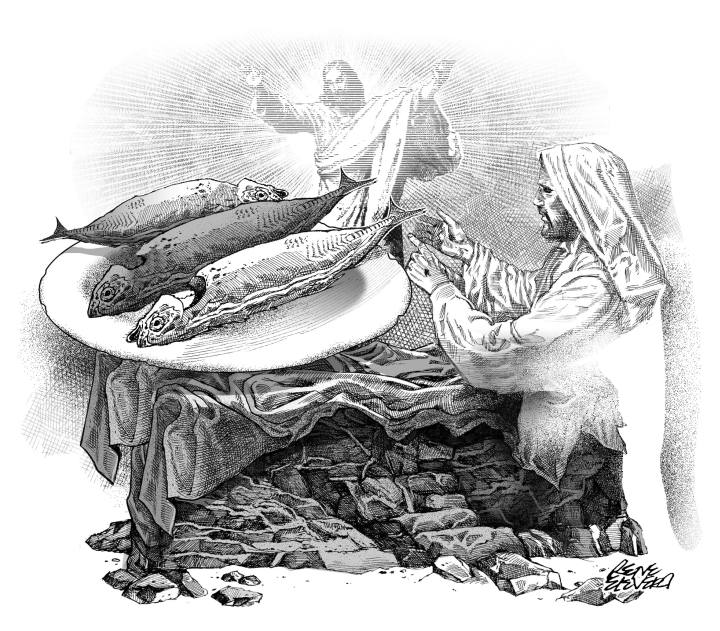
I do not believe in ghosts, and yet I am afraid of them. Staying alone in a room at night, even in our own house, gives me the shivers. In order to sleep, I must cover myself with a blanket, especially the toes, which are quick to detect any mysterious change in room temperature during the little hours.
So far I have not seen, and pray that I will never see, a ghost. This, despite that, one day, while standing in front of the house, I saw a neighbor, whom for months a terminal sickness had confined to bed, walking towards the village gate thirty meters away. I thought that she had miraculously recovered, but to my surprise, I learned of her death within the week. Technically, I did not see a ghost, because when I saw her our neighbor had not yet died.
During a trip to a northern province, in the ancestral home of a prominent family, which now serves as a museum, I asked the wife to pose for a shot with my camera phone. Later, when our daughter checked the picture, she saw at the back of her mother, who sat on an antique diva, the figure of a woman, formally dressed and holding a bag. I do not remember seeing her when I took the picture.
Besides, there was only a locked up abandoned room with glass walls behind the wife, and no one could have stood there.
A friend, who once held a high position in the government, let on during a casual conversation that as a boy he saw his dead grandmother, and that when he ran towards and tried to touch her, he felt nothing.
I find it significant that the apostles themselves believed in ghosts.
Two of the disciples had seen the risen Christ, who had walked with them on the road to Emmaus, and whom they recognized at table when he broke bread with them. And suddenly Jesus stood before them and said, “Peace be with you.”
Luke writes that “they were startled and terrified and thought that they were seeing a ghost.” But Jesus assured them, “Why are you troubled? And why do questions arise in your hearts? Look at my hands and my feet, that it is I myself. Touch me and see, because a ghost does not have flesh and bones as you can see I have.”
After that Jesus asked for something to eat and was given a piece of broiled fish, which he took and ate in front of them.
The Irish bishop and philosopher George Berkeley maintained that material things, such as tables and chairs, did not exist, and that these were merely ideas in the mind of the perceiver.
In his biography of Samuel Johnson, James Boswell narrates that, after coming out of the church, they discussed Berkeley’s notion about the non-existence of matter. When Boswell remarked that, despite the fact that Berkeley’s doctrine was not true, it would be impossible to disprove it, Johnson said, kicking a large stone with his foot, “I refute it thus.”
Jesus did a similar thing in the episode Luke writes about, in which the apostles took Jesus for a ghost, and in effect did not believe that Jesus had risen from the dead. To convince them, Jesus asked for and partook of broiled fish, as though saying to those skeptical of his rising, “I refute it thus.”
For me, the broiled fish ranks with the empty tomb as proof of Christ’s Resurrection, whose significance to the Christian faith is central. As Timothy Keller puts it in his book, The Reason for God, “If Jesus rose from the dead, then you have to accept all that he said; if he didn’t rise from the dead, then why worry about any of what he said? The issue on which everything hangs is not whether or not you like his teaching but whether or not he rose from the dead.”